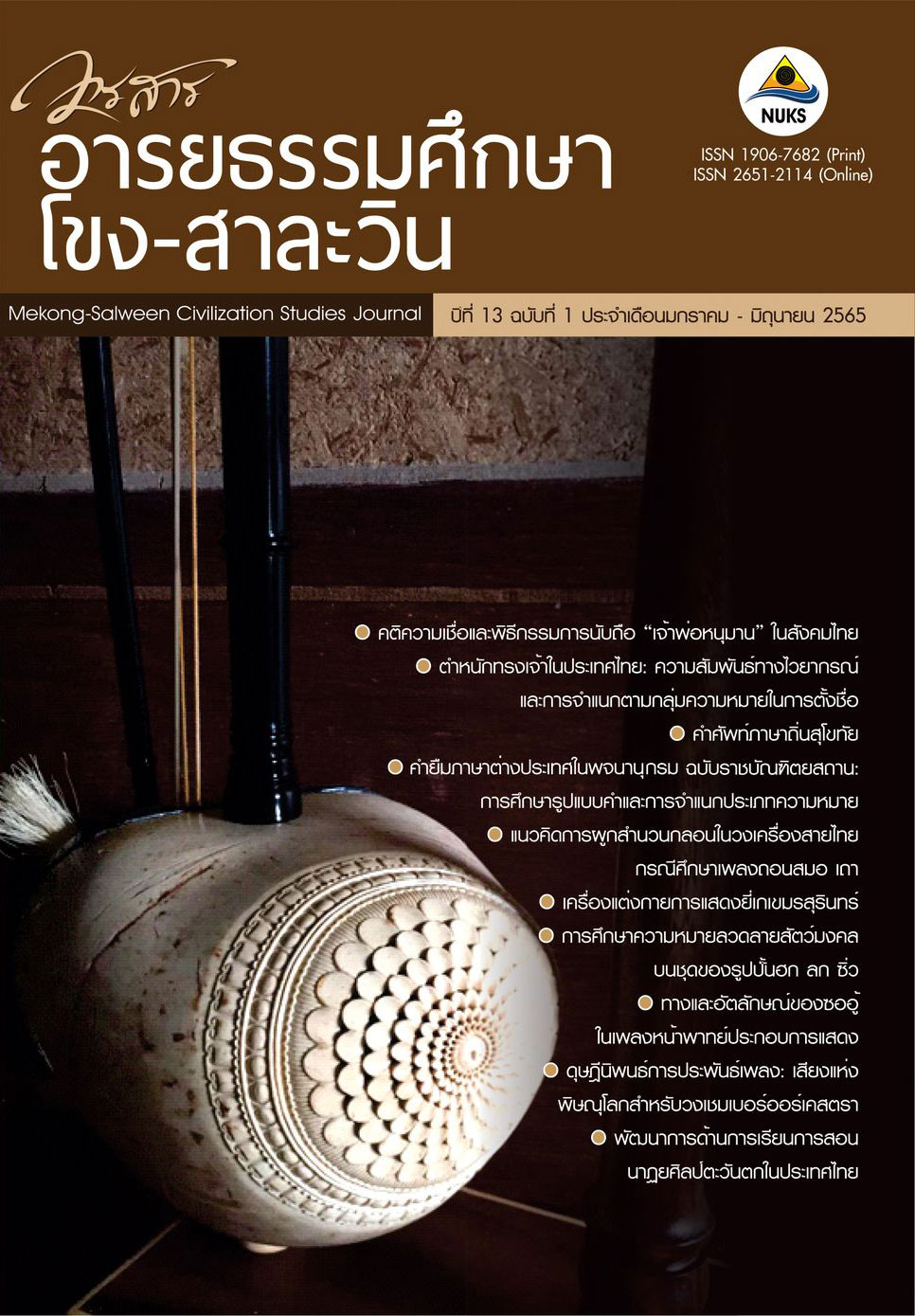A Study on the Meaning through the Auspicious Animal Patterns on Clothing of Fuk Luk Sau Statues การศึกษาความหมายลวดลายสัตว์มงคลบนชุดของรูปปั้นฮก ลก ซิ่ว
Main Article Content
Abstract
The purposes of this research were to investigate the meanings of the auspicious animal patterns on clothing of Fuk Luk Sau statues and explore how the meanings of these patterns were related to the statues. In this research, the fieldwork was conducted. Thirty-six samples of the Chinese auspicious animal patterns toward clothing of the Fuk Luk Sau statues derived from Jiangxi or Kangsai were collected for the study. The results suggested that the auspicious animal patterns consisted of dragons, cranes, lions, bats, and kirins. There were types of the images of dragons on Fuk statues: fairy tale dragons, dragon line drawings, and dragons in circles. They conveyed the meaning of high prestige and great power over other matters in the world. Meanwhile, cranes and lions on Luk statues symbolized prosperous life. Besides, bats and kirins appeared on Sau statues. There were two types of bats, including ancient bats and bat line drawings. The bats represented longevity and the five concepts of happiness: happiness, longevity, wealth, holding good morals, and passing with peace. Finally, the pictures of kirins demonstrated animals in the Chinese mythology. They were unique as they had unusual character contributing Chinese people to believe that they were sacred and able to eliminate evils and demons. Therefore, the auspicious animal patterns on clothing of Fuk Luk Sau statues can convey the grand wishes, perfectly corresponding to the meanings of the Fuk Luk Sau statues.
Downloads
Article Details

This work is licensed under a Creative Commons Attribution-NonCommercial-NoDerivatives 4.0 International License.
References
Chumpengpan, P. (2001). Chinese auspicious animal. Bangkok: Chomromdek.
Damrongrachanuphab. (1984). The legend of altar tables. (13th ed.). Bangkok: MITSIAM.
Fang, L. (2021, August 26). Interview. Specialist in Fuk Luk Sau statue.
Jantaronanont, P. (2006). Fuk Luk Sau and happiness, wealth, longevity. (4th ed.). Bangkok: Matichon.
Meelarp, T. (2006). Cultural materials in Mungkorn Kummalawart Temple. (Master’s Thesis). Ramkhamhaeng University, Bangkok.
Pandamrong, T. (2010). A Study of Chinese art patterns. Mekong-Salween Civilization Studies Journal, 1(2), 20.
Petpimol, C. (2015). Charismatic Theory. Silpakorn Educational Research Journal, 7(1), 218.
Pongpanich, K. (2012). Chinese heavenly auspicious patterns. (9th ed.). Bangkok: SAENGDAO.
Tangvanich, V. (2017, November 12). Interview by P. Pongsuwan [Video file]. Workpoint, Pathumthani.


